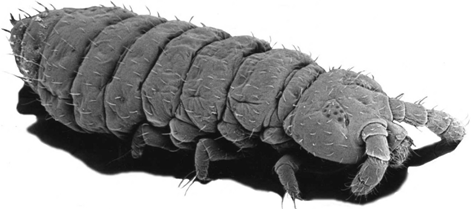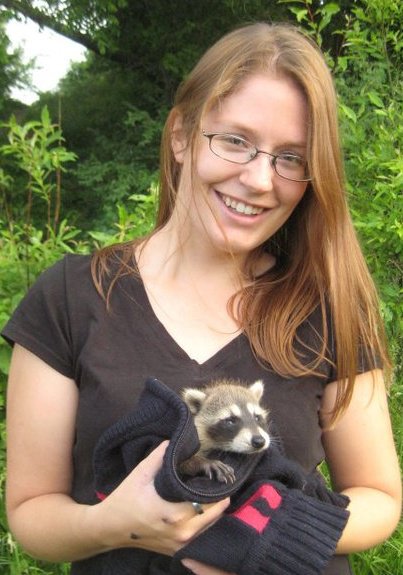
The Sinclair Lab at UWO

 |
Insect Low
Temperature Biology The Sinclair Lab at UWO |
 |
| Katie Marshall | |||
| Home People Research Publications Vacancies Links Contact Us Biology Home |
In the past 30 years, much about the physiology of cold tolerance in a variety of organisms has been elucidated. The vast majority of these studies have focused on the effects of either a long-term seasonal acclimation or the effects of a single exposure. However in many natural environments, temperature fluctuates on multiple, overlapping temporal scales that vary in predictability, including daily, weather frontally, seasonally, and multi-year (such as the NAO effect). And with changing climate, the frequency and intensity of these cycles is changing. My PhD focuses on four broad questions : 1) if repeated cold exposure poses an additional stress on insects above single exposures, 2) what fitness components are affected by repeated stress, 3) whether insects with different cold tolerance strategies experience the same costs in repeated stress, and 4) predicted population effects under climate change. To answer these questions, I use several species of Canadian insects, including the freeze tolerant goldenrod gall fly Eurosta solidaginis, the freeze avoiding eastern spruce budworm Choristoneura fumiferana, the freeze tolerant caterpillar Pyrrharctia isabella, and the chill susceptible fly Drosophila melanogaster. In addition to lab studies, I use temperature data from both weather stations and microclimate to build numerical simulations of overwintering fitness. Publications 11. Brown, J. C. L., Marshall, K. E., Fieldes, M.A. & Staples, J. F. (In press) Differences in tissue concentrations of hydrogen peroxide in the roots and cotyledons of annual and perennial species of flax (Linum) and the mechanisms responsible. Botany. 10. Williams, C.M., Marshall, K.E., MacMillan, H.A., Dzurisin, J.D.K., Hellmann, J.J. & Sinclair, B.J. (2012) Thermal variability increases the impact of autumnal warming and drives metabolic suppression in an overwintering butterfly. PLoS ONE. 7, e34470 9. Marshall, K.E. & Sinclair, B.J. (2012) The impacts of repeated cold exposure in insects. Journal of Experimental Biology. 215, 1607-1613. 8. Marshall, K.E. & Sinclair, B.J. (2012) Threshold temperatures mediate the impact of reduced snow cover on overwintering freeze tolerant caterpillars. Naturwissenschaften 99, 33-41. 7. Zhang, J., Marshall, K.E., Westwood, J.T., Clark, M.S. & Sinclair, B.J. (2011). Divergent transcriptomic responses to repeated and single cold exposures in Drosophila melanogaster. Journal of Experimental Biology. 214, 4021-4029. 6. Williams, C.M., Thomas, R.H., MacMillan, H.A., Marshall, K.E. & Sinclair, B.J. (2011) Triacylglyceride measurement in small quantities of homogenised insect tissue: comparisons and caveats. Journal of Insect Physiology. 57, 1602-1613. 5. Marshall, K. E. & Sinclair, B. J. (2011) The sub-lethal effects of repeated freezing in the woolly bear caterpillar Pyrrharctia isabella. Journal of Experimental Biology. 214, 1205-1212 4. Strachan, L. A., Tarnowski-Garner, H. E., Marshall, K. E., & Sinclair, B. J. (2010) The evolution of cold tolerance in Drosophila. Physiological Biochemistry & Zoology. 84, 43-53. 3. MacAlpine, J. L. P., Marshall, K. E. & Sinclair, B. J. (2010) The effects of CO2 and chronic cold exposure on fecundity of female Drosophila melanogaster. Journal of Insect Physiology. 57, 35-37. 2. Bazinet, A., Marshall, K. E., MacMillan, H. A., Williams, C. M., Sinclair, B. J. (2010) Rapid changes in desiccation resistance in Drosophila melanogaster are facilitated by changes in cuticular permeability. Journal of Insect Physiology. 56, 2006-2012. 1. Marshall, K. E. & Sinclair, B. J. (2010) Repeated cold exposure results in a survival-reproduction tradeoff in Drosophila melanogaster. Proceedings of the Royal Society B. 277, 963-9. As
a
result of her enthusiasm as a volunteer in others' experiments,
Katie
is the only member of the lab who can provide documentary evidence
that
she has a brain. Until we uncover grey matter in any other
lab
members, please direct thought-requiring questions to her. |
 |
|